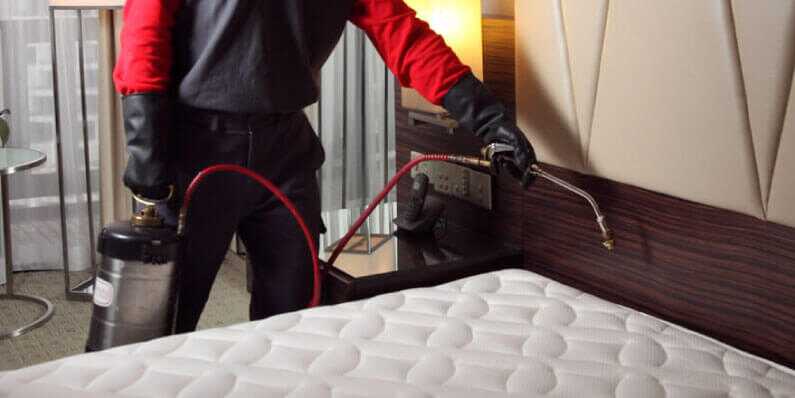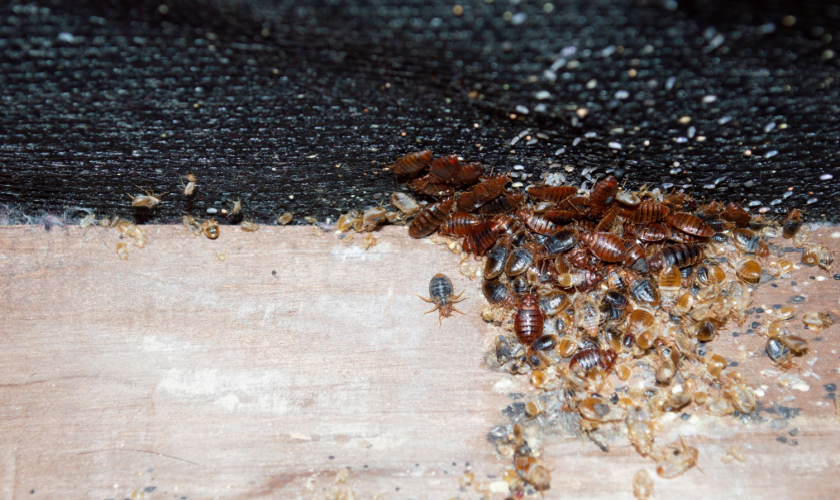Relied On DC Exterminator for Bed Bug Heat Treatment Near Me
Relied On DC Exterminator for Bed Bug Heat Treatment Near Me
Blog Article
Checking Out the Scientific Research Behind Bed Pest Warm Treatments as a Sustainable Parasite Administration Method
In the realm of parasite management, the quest for reliable and sustainable solutions stays a continuous search. One such method that has actually obtained traction over the last few years is making use of warmth treatments to battle bed pest invasions. By using the science behind thermal death factors for these consistent parasites, warmth therapies use an appealing alternative to standard chemical-based techniques. The ins and outs of exactly how warm effectively gets rid of bed bugs and the broader ramifications for lasting parasite management techniques make this a topic worth discovering additionally.
Bed Pest Warmth Therapy Process

Thermal Fatality Factor for Bed Pests
Exposing bed pests to elevated temperature levels beyond their thermal resistance array is critical for accomplishing efficient removal in heat therapy procedures. The thermal death factor for bed insects refers to the temperature at which these insects can not survive. Research indicates that bed pests start to perish when revealed to temperatures over 113 ° F(45 ° C) for a sustained period. As the temperature level enhances, so does the mortality rate of bed bugs. At around 118 ° F(48 ° C ), bed pests begin to pass away quickly, with a death rate of almost 99% within mins of direct exposure. This shows the level of sensitivity of bed bugs to heats and highlights the effectiveness of warmth therapies in getting rid of problems. By reaching and preserving temperature levels over the thermal fatality factor for bed bugs, insect monitoring professionals can make certain thorough elimination of bed pest populations, including hard-to-reach areas where chemical therapies might be much less effective. Understanding the thermal fatality factor for bed insects is vital for executing effective warmth treatment approaches and achieving sustainable insect management results.
Benefits of Heat Treatments
Having established the important thermal death factor for bed bugs, it is crucial to now check out the substantial advantages that warmth treatments provide in efficiently removing these resilient pests. One of the primary advantages is that warm can permeate deep right into crevices and cracks where bed bugs conceal, ensuring that even the most hard-to-reach areas are warmed to lethal temperature levels.
In addition, warm therapies are safe and eco-friendly, making them a lasting parasite administration method. Unlike chemical pesticides, warm treatments do not leave harmful deposits that can position threats to human health and wellness or the atmosphere. This facet is particularly crucial in sensitive settings such as hospitals, institutions, and household areas where chemical usage might not be preferable.
Furthermore, warmth treatments have a high success price in eliminating bed insect problems in a solitary treatment, reducing the need for several gos to and decreasing disruption to owners. This efficiency not only saves time and cash however also gives satisfaction to those taking care of bed insect issues.
Efficiency of Heat Treatment

Research study researches have regularly demonstrated the effectiveness of warmth therapies in achieving a high price of bed insect mortality. Properly carried out warm therapies can reach all the gaps and cracks where bed pests might be nurturing, ensuring a thorough technique to additional hints elimination. Heat therapies have the included benefit of killing bed pest eggs, which are typically resistant to standard chemical treatments. In general, the efficiency of warmth treatments in getting rid of bed insect infestations makes them a sustainable and dependable parasite administration approach.
Sustainable Pest Management Perks
Applying sustainable insect management methods offers lasting benefits this hyperlink for both the setting and public wellness. By making use of techniques such as warm therapies for insect control, we can lower the dependence on harmful chemical pesticides that can have negative effects on environments and human wellness - exterminator near me. Sustainable insect administration methods help in maintaining biodiversity by targeting specific parasites without harming non-target microorganisms, consequently keeping a balanced environment
Additionally, sustainable insect monitoring techniques contribute to the total health and wellness and well-being of the general public. By reducing exposure to poisonous chemicals utilized in conventional pest control approaches, warm therapies give a safer alternative for pest monitoring in household, business, and public areas. This reduction in chemical usage additionally assists in preventing chemical deposits from polluting dirt, air, and water, guarding environmental quality.
Verdict
To conclude, bed insect warmth therapies have actually been revealed to be a lasting and reliable bug administration method. The thermal fatality point for bed bugs makes them at risk to heat therapies, which have countless benefits over typical chemical treatments. The effectiveness of warm treatments in getting rid of bed bug invasions while reducing environmental impact highlights the capacity of this approach as a sustainable remedy for insect control.
The bed pest warmth therapy process entails raising the temperature level within ravaged locations to a level that effectively eliminates bed insects and their eggs. By getting to and maintaining temperatures above the thermal fatality point for bed bugs, pest administration specialists can make certain detailed elimination of bed bug populaces, including hard-to-reach areas where chemical treatments might be much less effective. One of the main benefits is that warmth can pass through deep right into splits and gaps where bed pests conceal, guaranteeing that even the most hard-to-reach areas are heated to lethal temperature levels. Unlike chemical treatments that might leave behind immune populaces, warmth treatments offer a safe and ecologically friendly option that can penetrate deep into furnishings, wall surfaces, and various other hard-to-reach areas where advice bed bugs conceal.
The thermal fatality factor for bed insects makes them at risk to heat therapies, which have many benefits over typical chemical therapies.
Report this page